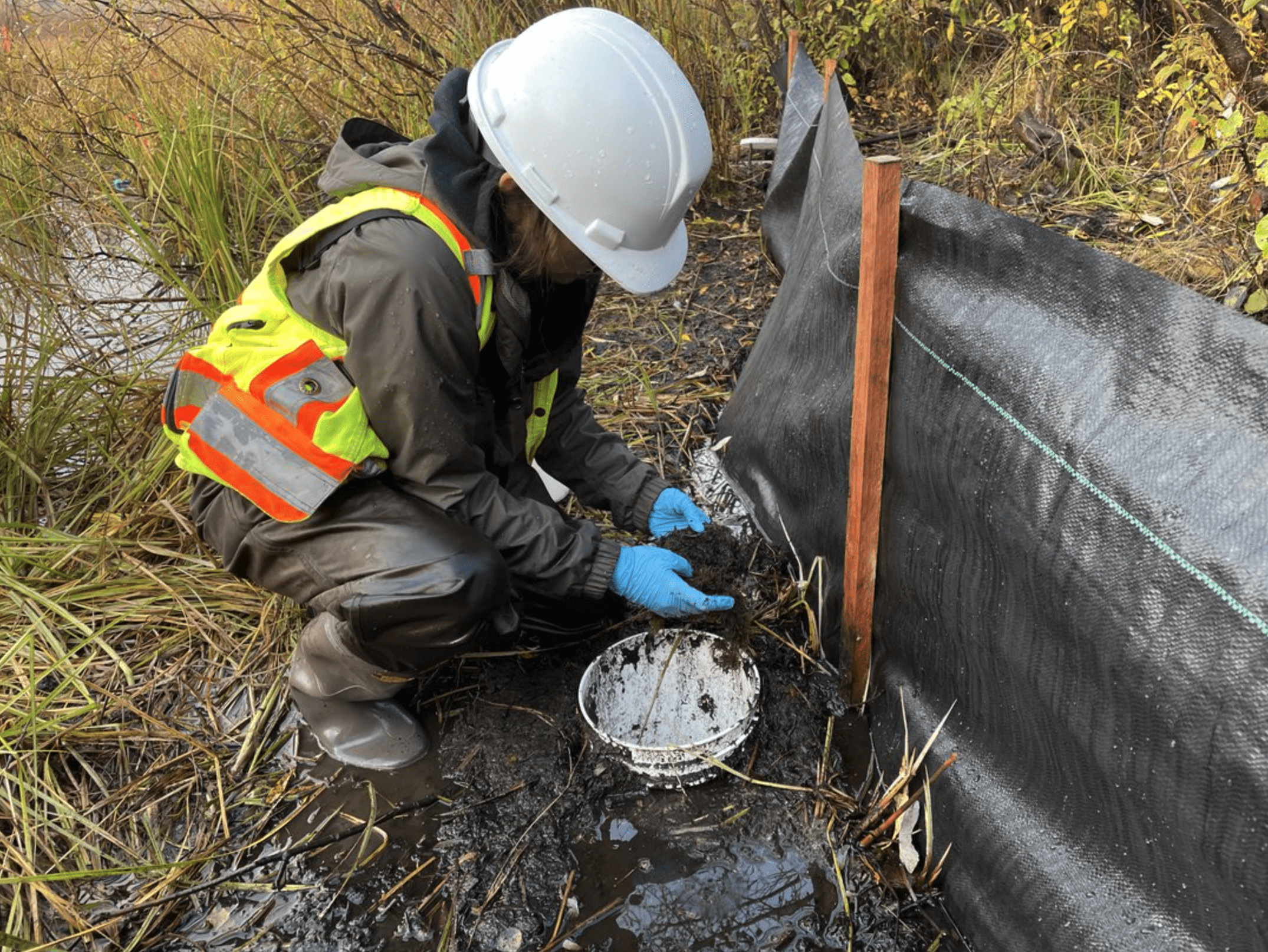Simpcw Resources LLP Environmental Division’s team is busy wrapping up the amphibian salvage field season. The final completion of the study will be conducting wetland amphibian salvages alongside the Trans Mountain Pipeline project corridor. Prior to any construction taking place near amphibian breeding ponds, amphibian salvages must be conducted to ensure disturbance to overwintering frogs, toads, and salamanders do not occur. The primary species the environmentalists have been seeing this season include the aquatic Columbia spotted frog, western toads, wood frogs, pacific chorus frogs, and long-toed salamanders.
Amphibians are an important part of British Columbia’s ecosystem and are known as primary ecosystem indicators. The health and abundance of amphibians within wetlands and nearby forested areas indicates the health of those habitats. Frogs and salamanders are very sensitive to toxins which is why the crews must be cautious about using bug spray, sunscreen and hand sanitizer when conducting salvages. Alongside, providing indicators of the health of the land, amphibians serve other purposes like eating up pesky bugs, algae, and detritus on the wetland floors, providing food for predators – such small mammals, blue herons, raptors and other birds, and help to aerate soil with underground digging.
The amphibian salvage process works by an experienced amphibian biologist first writing and submitting amphibian salvage plans, then the field crew, made up of biologists and environmental technicians, helps to oversee isolation of the construction area by isolating it from the adjacent wetland. They use tools such as sediment fencing or aqua dams to “isolate” the construction area. Once the isolation is in place, pitfall traps are installed; this trapping method ensures that any new amphibians cannot enter the construction area and any amphibians already inside the area are captured in the buckets. The traps are installed by our field team digging a hole along the inside of the isolation fence and placing a bucket flush to the ground for amphibians to fall into. These traps are left out overnight and checked once to twice daily, depending on the capture numbers, and remain on site until no more amphibians are observed in the isolated area.
In conjunction with pitfall trapping, aquatic funnel traps can also be placed throughout an aquatic area to catch aquatic life stages, such as tadpoles and larvae, or aquatic species of frogs. Visual encounter surveys and dip netting are also methods which are implemented during salvages – catching amphibians by hand sure brings back memories! Once captured, the amphibians are relocated to a nearby wetland to protect them from possible construction disturbance.

